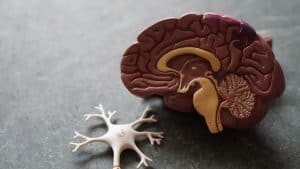
Supercomputer discovers how cell membrane shape causes cancer
pharmafile | April 5, 2017 | News story | Research and Development | Cancer, K-Ras
Researchers from Case Western Reserve University School of Medicine have harnessed the power of a supercomputer to analyse one particular protein’s role in cancer development. The protein in question, K-Ras, is located on the outside of cell membranes but can turn in towards the cell – losing its function whilst also causing problems for the cell itself, such as causing cancer.
In a healthy cell, the protein, a small enzyme, detects signals that originate from outside the cell but when the proteins are dysfunctional, they can turn its active portion into the cell itself. The research found that the shape of the protein is an approximate pyramid, rather than a sphere – meaning that there is an active ‘face’ picking up on signals outside the cell.
However, the simulations that were modelled on the computer revealed that a type of fat or lipid can cause the cell membrane to shift, moving the protein in turn. Once turned back into the cell itself, the signals from the protein can cause the cell turn to cancerous.
“Experimental studies have shown that the orientation of the cancer-causing K-Ras protein at the membrane matters for its function,” said Matthias Buck, Study Lead and Professor of Physiology and Biophysics, Case Western Reserve University School of Medicine, and a member of the Case Comprehensive Cancer Center. “We found that a particular type of membrane lipid, PIP2, turns the protein to an orientation that allows it to become active and promote cancer.”
The reason for the use of supercomputer modelling is down to the significant machine power needed to model the complexity of the environment. K-Ras, itself, is 1/100,000th of an inch in size and the model necessitated the exact atoms of the protein to be modelled accurately to gauge how it would react to the change in the shape of the cell membrane.
The importance of the discovery is that, up until now, it was not fully understood how the K-Ras protein played a role in causing cancer. Now, rather than therapeutically targeting the protein itself, it may be possible to prevent cancer developing through inhibiting the cell membrane shape from changing itself.
Ben Hargreaves
Related Content

Geneos Therapeutics shares data from phase 1/2 trial for cancer vaccine
Geneos Therapeutics has announced that it has published positive safety, immunogenicity and efficacy data from …

Curve Therapeutics’ CSO publishes research on HIF inhibition for cancer treatment
Curve Therapeutics has announced that its chief scientific officer, Professor Ali Tavassoli has published research …

Verastem Oncology gains Fast Track Designation for combination NSCLC treatment
Verastem Oncology has announced that the US Food and Drug Administration (FDA) has granted Fast …








